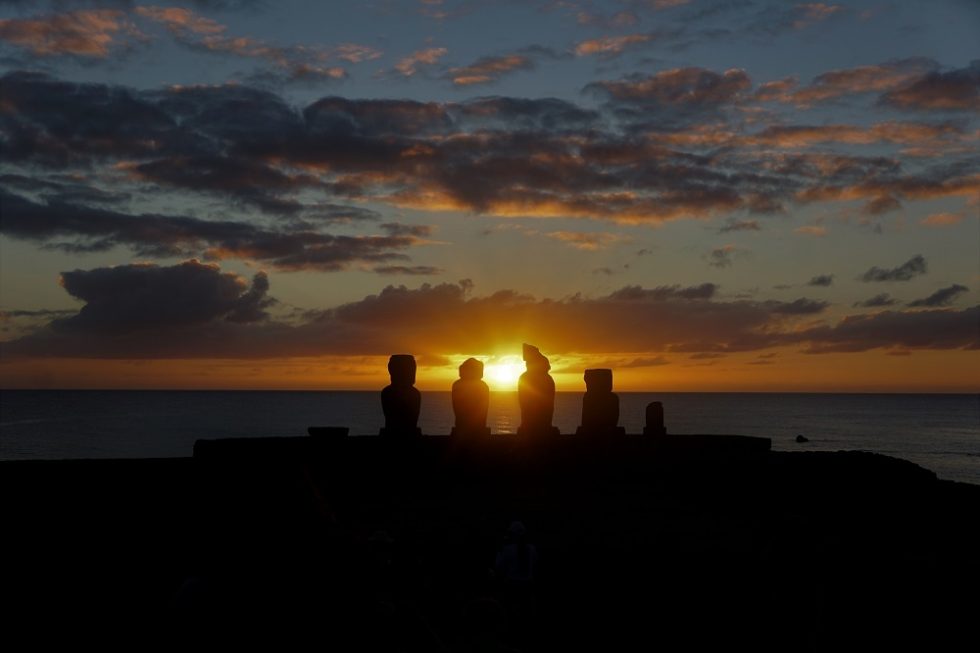In June, I went on the trip of a lifetime – a two-week trip to Rapa Nui! In this post, I’ll explain why I was there and how I spent my time on the island.
Rapa Nui may not sound familiar to you. This is because the island is generally called Easter Island or Isla de Pascua by westerners. However, out of respect for the original islanders, in this post I will call it Rapa Nui, their name for the island.
How I Ended up on a Work Trip to Rapa Nui
The University of Arizona is lucky enough to have Dr. Terry Hunt as our Honors College Dean. Dr. Hunt is an archaeologist and anthropologist and is one of the world’s top experts on Polynesia, and specifically, Rapa Nui. He has run a number of study abroad/field research trips to the island over the years, including this one.
I know Dr. Hunt because I help out with Honors College recruitment events, and because I’m an alumnus of the college. Last fall, I not-so-subtly told him about my love for traveling, the fact that I have flexible time in the summers, and the fact I’m not tied down by children (very important!), and my interest in visiting Rapa Nui. Still, Dr. Hunt gets dozens of inquiries a year, so I didn’t expect that to go anywhere.
But it’s always worth planting a seed, because in the end it did go somewhere! It turns out that his Dean duties meant Dr. Hunt wouldn’t be able to stay on Rapa Nui for the entire duration of the program. He needed another faculty member to act as faculty lead for part of the trip in order for the program to go forward, and that faculty member turned out to be me!
Following Dr. Hunt’s direction, I lead the students on various field work excursions, as well as other (cultural, recreational, etc.) activities on the island.
Getting There
Rapa Nui is extremely remote. It’s in the middle of the Pacific Ocean, not really close to anything else. It’s a five-hour flight from Santiago, and getting to Santiago from Arizona takes a while too! On top of that, when there is inclement weather on the island, they are extremely cautious about allowing flights. This is understandable given that there are really no diversion points. The island is so remote that there is no other place for a plane to go in the case of unsafe landing conditions on Rapa Nui.
This issue came up on my trip; when I landed in Santiago after already traveling for 20+ hours, I learned that my flight to Rapa Nui was delayed 10 hours due to storms on the island. That made for a really long day!
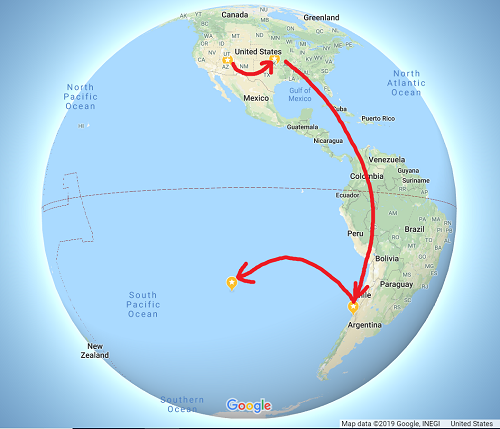
My route to Rapa Nui.
But I got there eventually, and needless to say slept extremely well that first evening on the island.
Our Work
Dr. Hunt and his colleagues have done a range of work on Rapa Nui (if you’re interested you can get his book here). On our trip, we had two primary tasks. The first involved using drones with cameras and special software to develop 3D models of the ahu. Ahu are raised platforms/shrines, some of which supported the moai (statues). The second task was to get water samples from the freshwater sources on the island (there are surprisingly many!). Some of these sources required are remote, meaning we had to hike several hours to the source to get the sample.
Some of the locations we visited are off limits to tourists, but we had permission to be there for research purposes. Also, drones are not allowed on the island except for research purposes. We received permission for both these activities from the Ma’u Henua Polynesian Indigenous Community, which is the administrator of the Rapa Nui National Park. In some of the photos below, you can see we are wearing a grey vest – this is to indicate we were conducting research.
Here are a few of the places we went to for water samples:
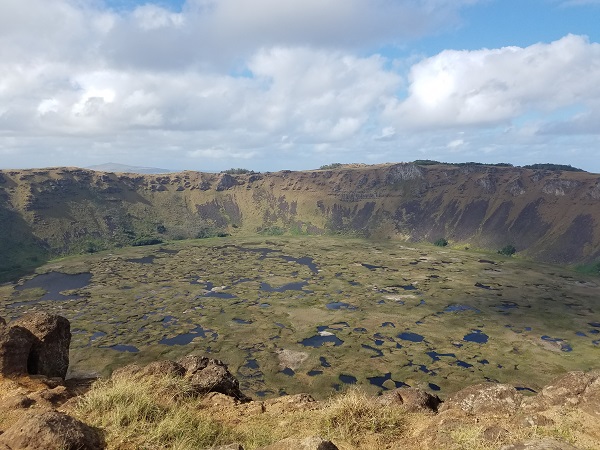
Looking down at the water in Rano Kau.
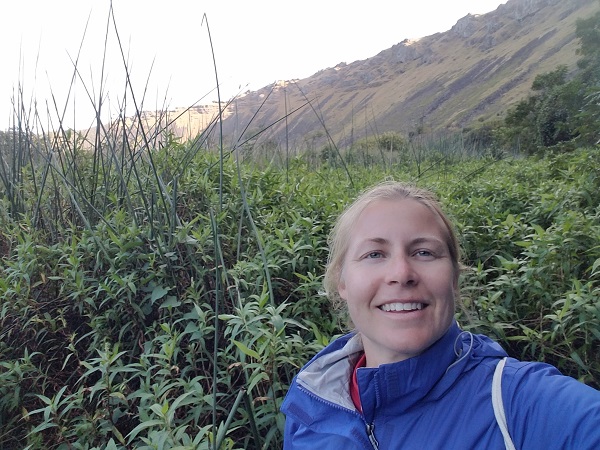
In the Rano Kau crater to take a water sample.

Students taking a water sample and measuring the salinity at Rano Aroi.
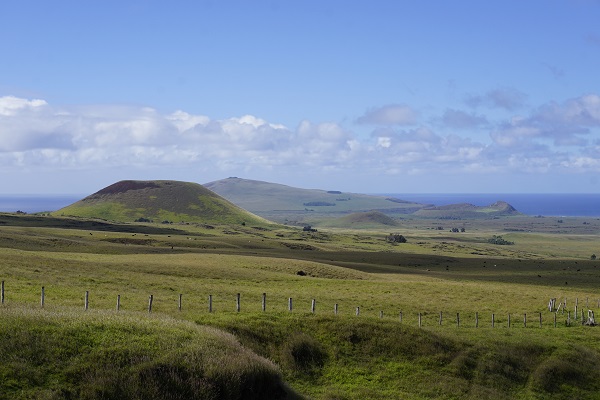
View of the eastern end of the island from one of the locations we hiked to for a water sample. Poike is in the background, and Rano Raraku is to the right.
Our Time on Rapa Nui
Rapa Nui is not a large island – it’s about 14 miles long and 7 miles tall. In our two week visit, we were able to see many ahu and moai, including most of larger sites shown on the map below.
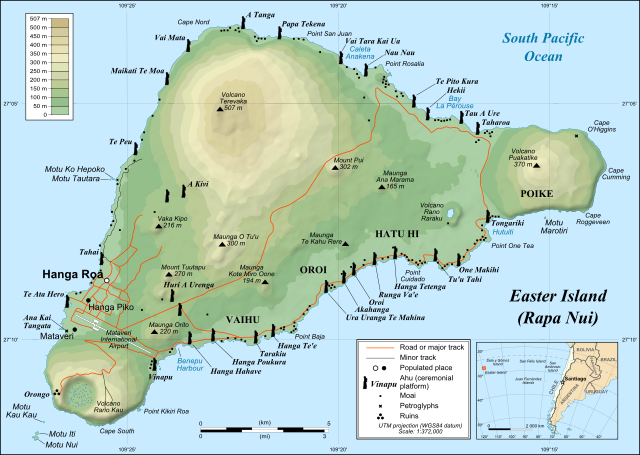
Map of Rapa Nui. By Eric Gaba (Sting), translated by Bamse – Own workShorelines, ponds, roads, trails and airport drawn using Landsat 7 ETM+ imagery (public domain);Topography: NASA Shuttle Radar Topography Mission (SRTM3v2) (public domain);Main references used for the toponymy:prof. William Mulloy’s map (easier to read here);Pacific Island Travel map (http://www.pacificislandtravel.com/easter_island/about_destin/isla_de_pascua[1].jpg);[1], CC BY-SA 2.5, Link
We stayed in a hostel, Hostel Pumakari, and on field work we were accompanied by an amazing local guide, Gina. Gina has been working with Dr. Hunt for years, and was an incredible asset. She seems to know everyone on the island, and also has immense knowledge about the history and archaeology of the island. We wouldn’t have been nearly as productive without her help.
Our days typically included lots of hiking, lunch in the field, and evenings spent reading or trying in vain to connect to the internet. Though there was internet, it was slow and unreliable, and I used the trip as an opportunity to largely disconnect from the online world.
June is winter in Rapa Nui, which meant temperatures in the high 60s/low 70s F and on some days, significant rain. We had a few days that were so rainy we didn’t leave the hostel except to get groceries. We also had a few free days, and I used these to go scuba diving (more on that in a future post!), check out the only sandy beach on the island, and complete an 11-mile hike of the north and west coasts with one of the more intrepid students.
More Photos
If I wrote about everything we did in detail, it would be a novel. Instead, I’ll leave you with some of my favorite photos from the trip. Culling my 1000+ photos to around 35 was not an easy task!

Some of the many moai scattered around Rano Raraku.
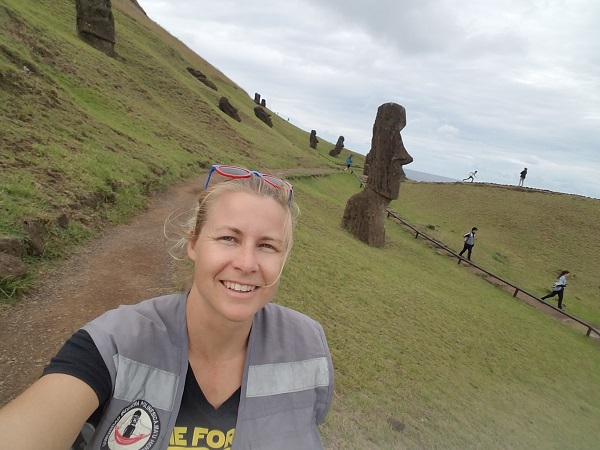
At Rano Raraku, the quarry.
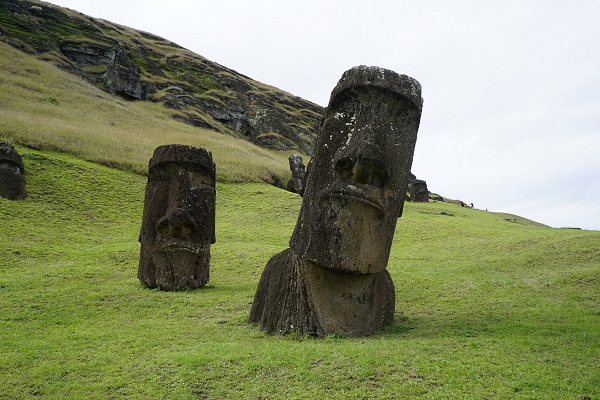
A few of the Rano Raraku moai.
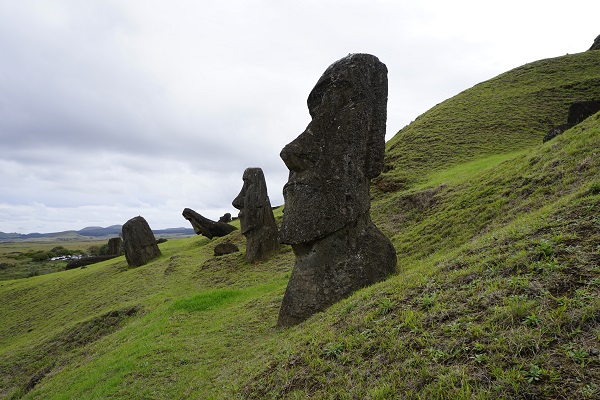
Some more Rano Raraku moai.
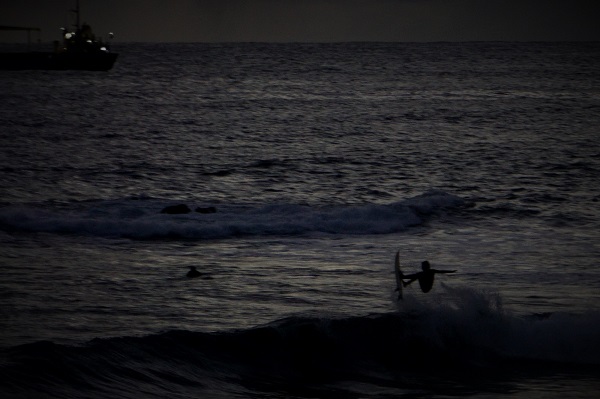
A surfer at dusk.
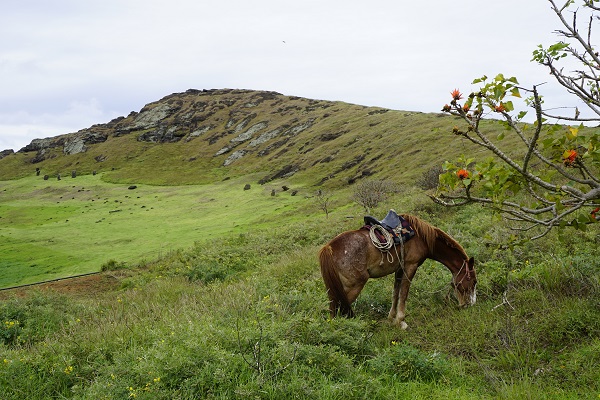
A horse grazing in the Rano Raraku crater. Note the moai scattered in the background.
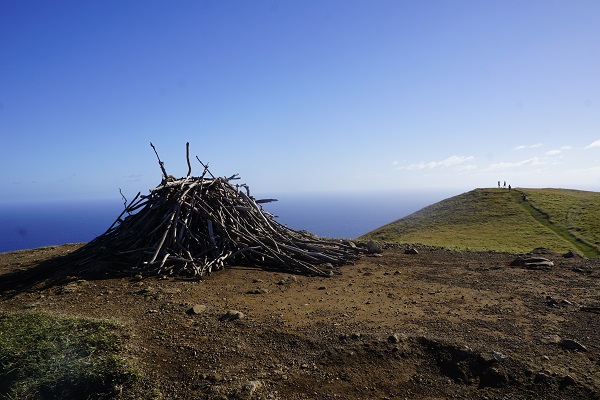
Terevaka, the highest point on the island at 507 meters.
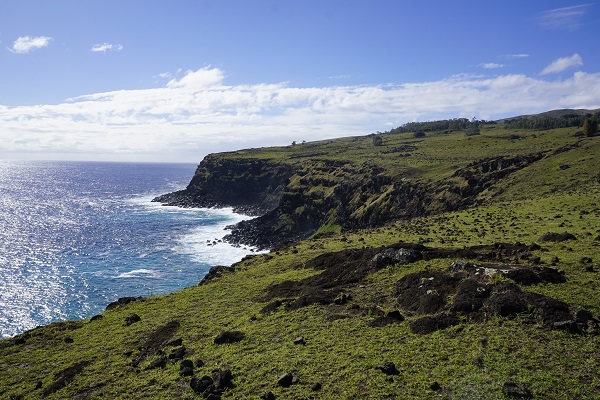
View of the stunning Rapa Nui coastline.
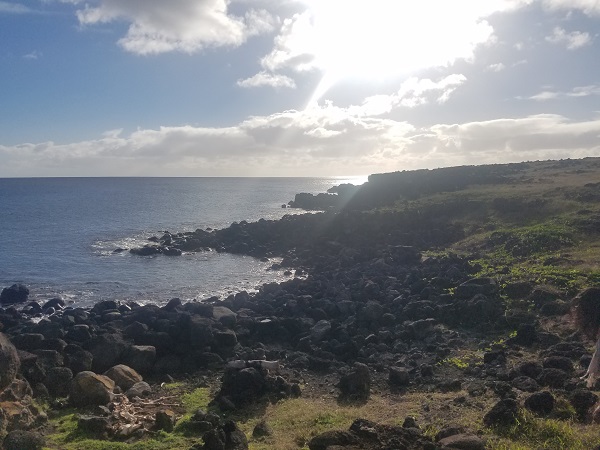
More stunning Rapa Nui coastline.
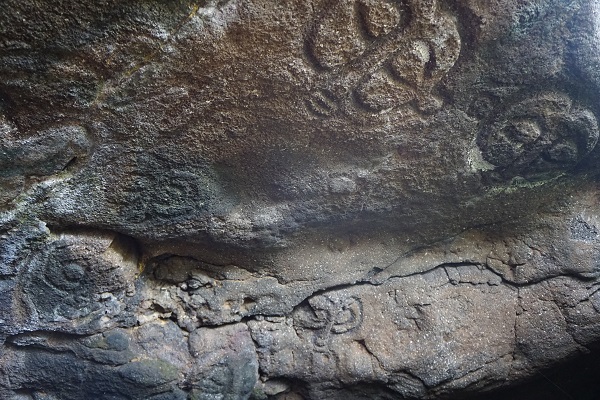
Petroglyphs in a cave.
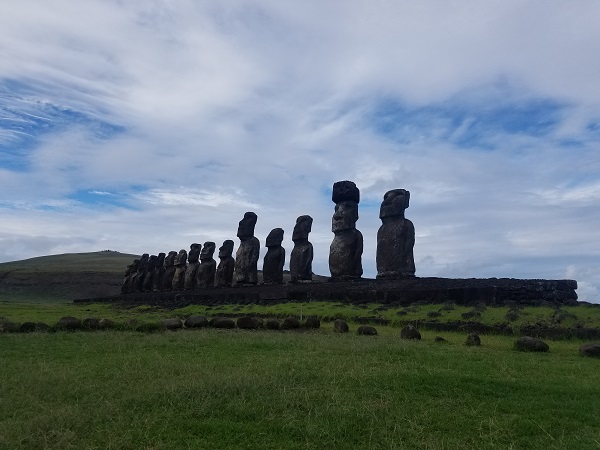
Ahu Tongariki.

A mushroom at Ahu Tongariki.
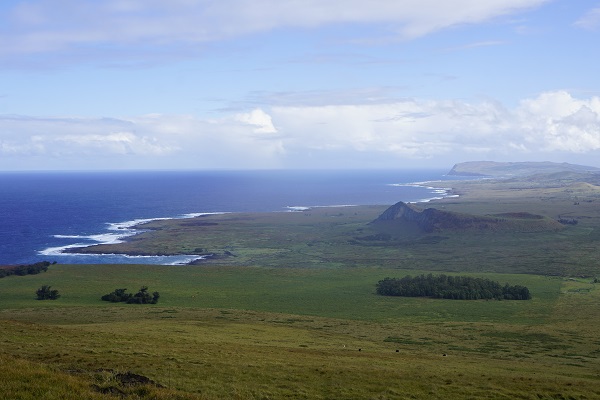
View of Rano Raraku (left) and Ahu Tongariki (right) from Poike.
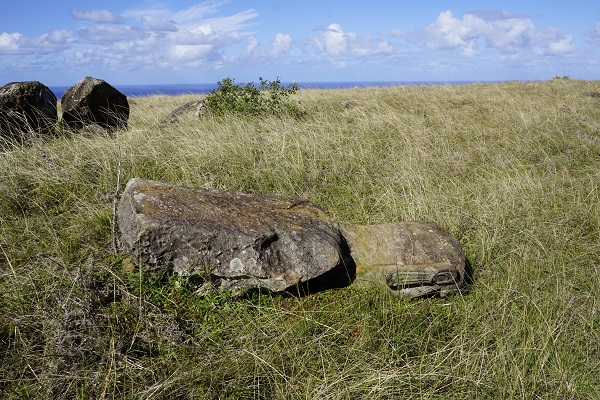
A fallen moai on the base of Poike. The ear carving is really well preserved.
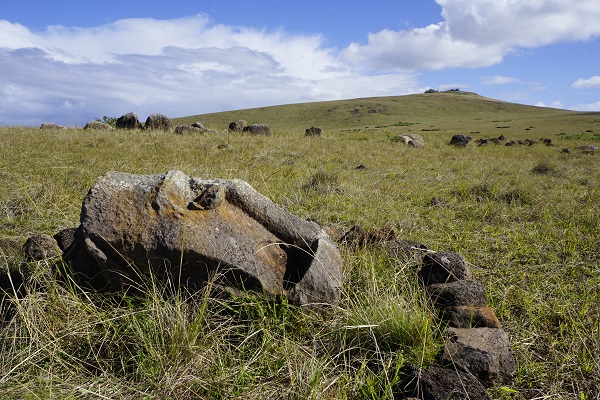
Moai head in front of Poike.
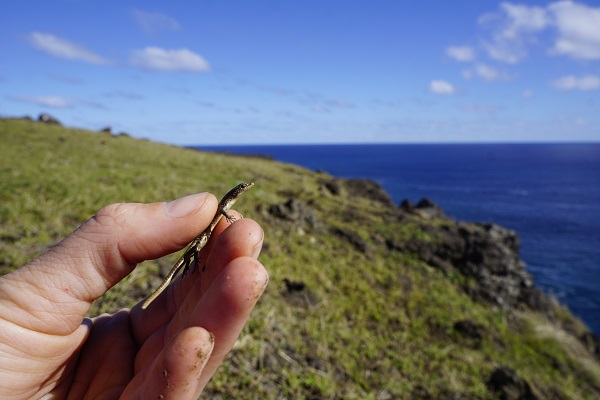
One of two lizard species on the island.
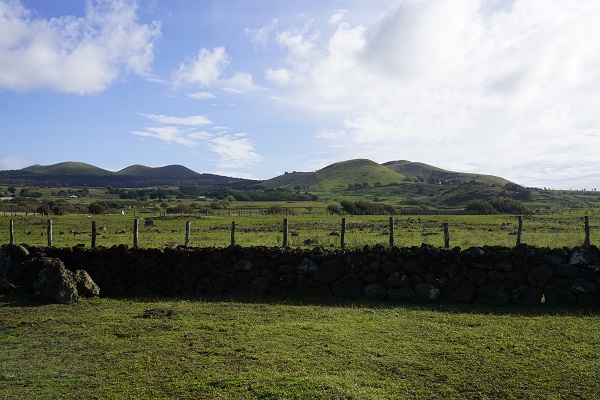
The Rapa Nui countryside.
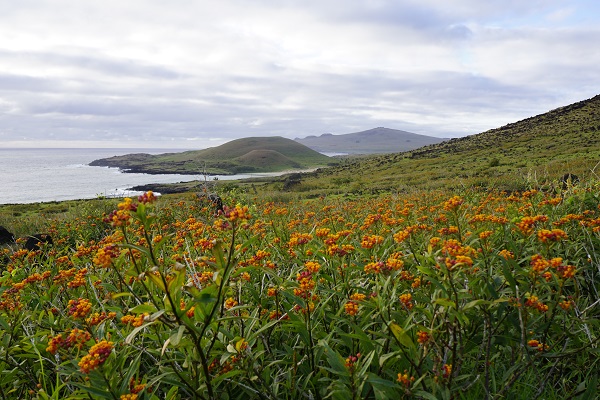
A sea of flowers.

A female moai. Ahu Tongariki can be seen in distance (upper right).

A row of fallen moai.
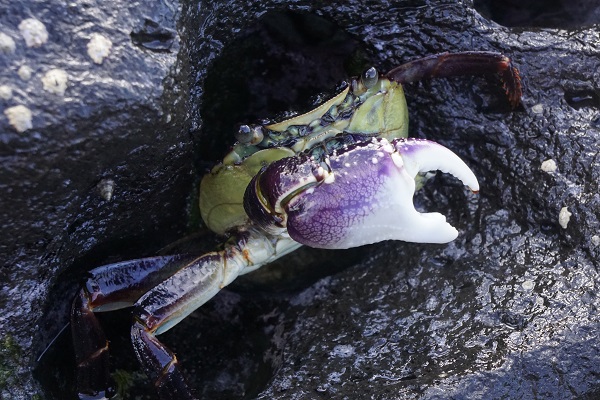
A crab in the rocks at the shoreline.
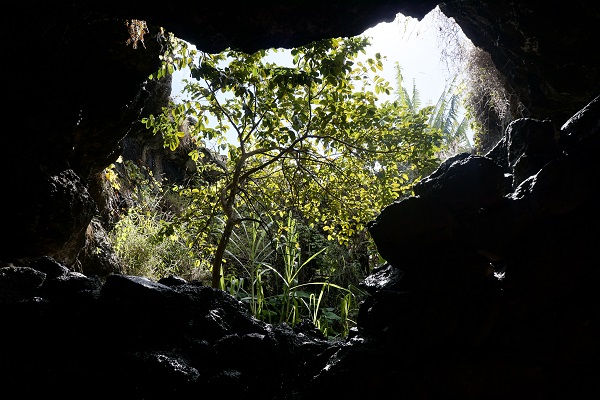
Looking out from inside a cave.
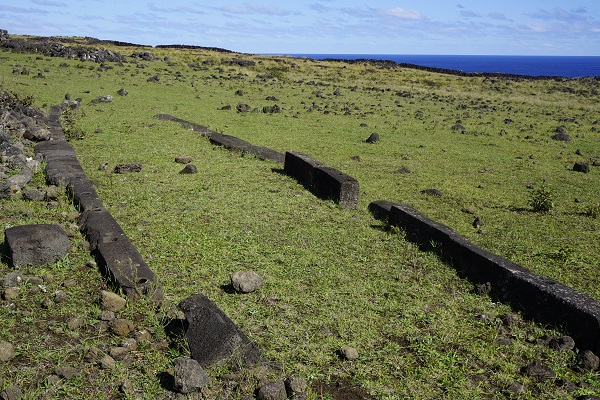
The foundations of a hare paenga (boat house).
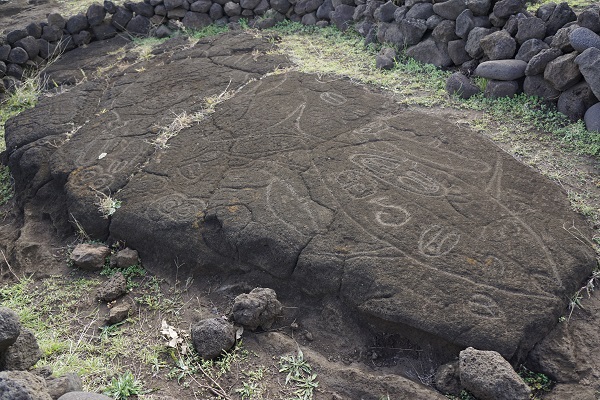
Bedrock covered in petroglyphs.

Petroglyphs in a cave.
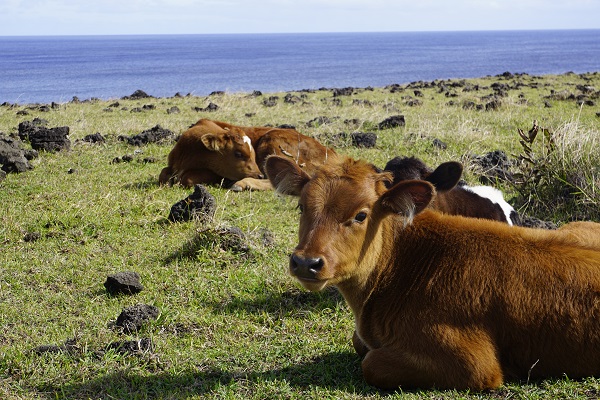
Adorable baby cow.
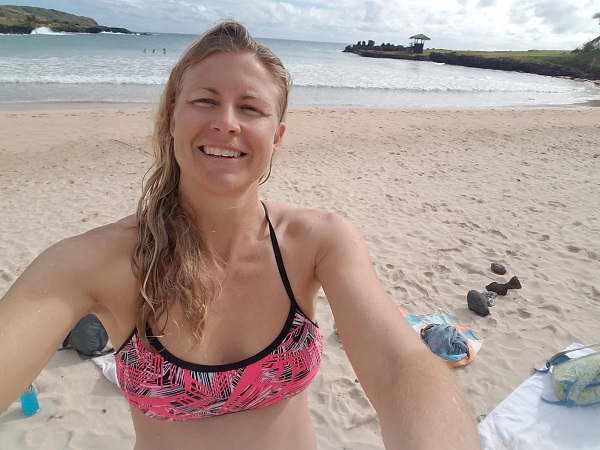
At Anakena, the only sandy beach on the island.
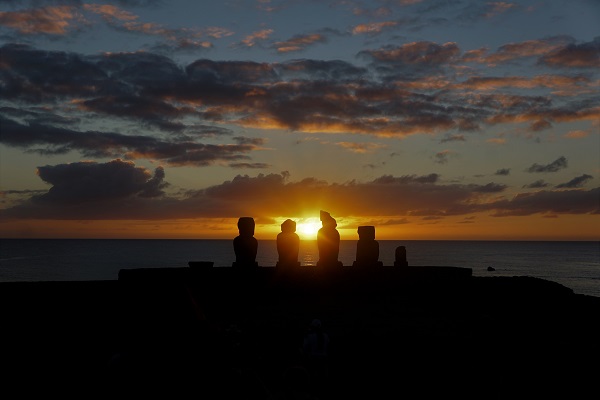
The sunset at Ahu Tahai.

Ahu Akivi, the only ahu where the moai face the sea instead of inland.
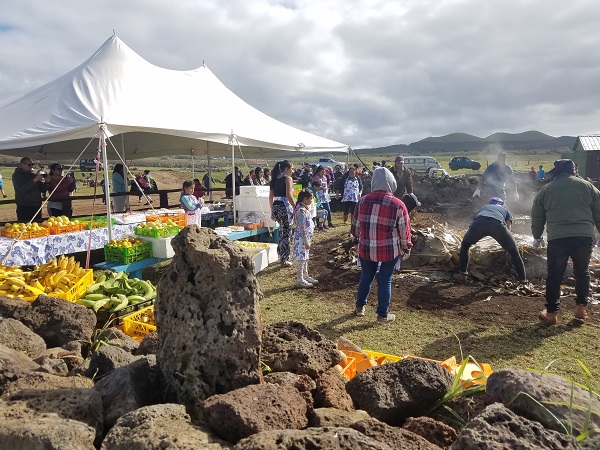
Preparing an umu, a traditional meal in which meat and sweet potatoes are cooked in a hole in the ground covered by banana leaves.
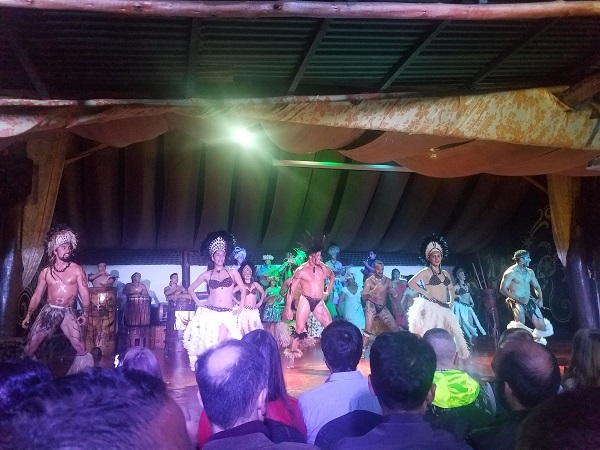
Traditional dancing at Kari Kari.
Next Up
My next trip will be a combo work/personal trip to Indonesia! I leave in a few days. The main purpose of the trip is to visit one of our partner universities. While there, I’ll also do some diving since I don’t have any teaching commitments till late August.
Share this Post
